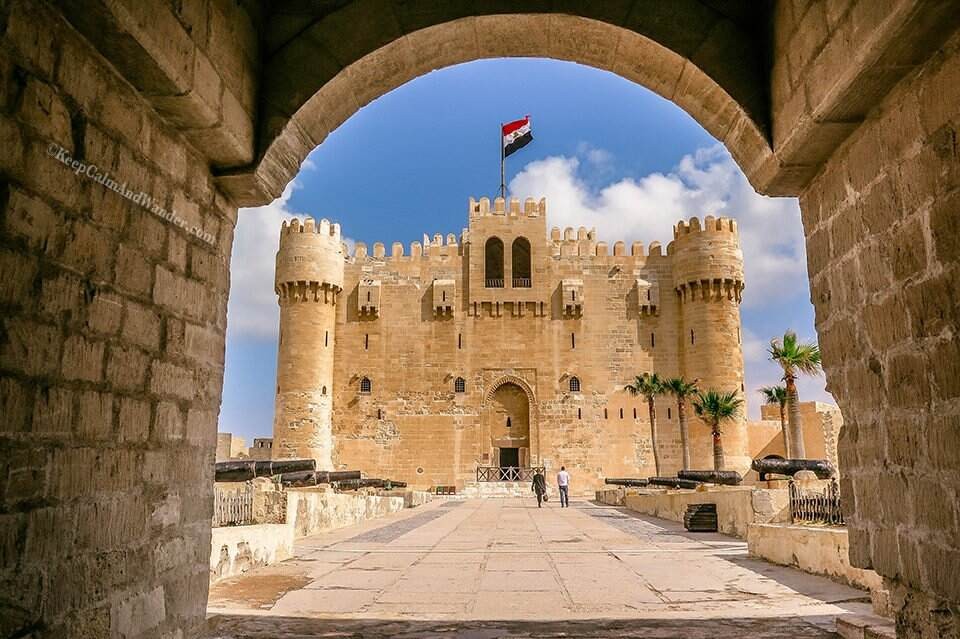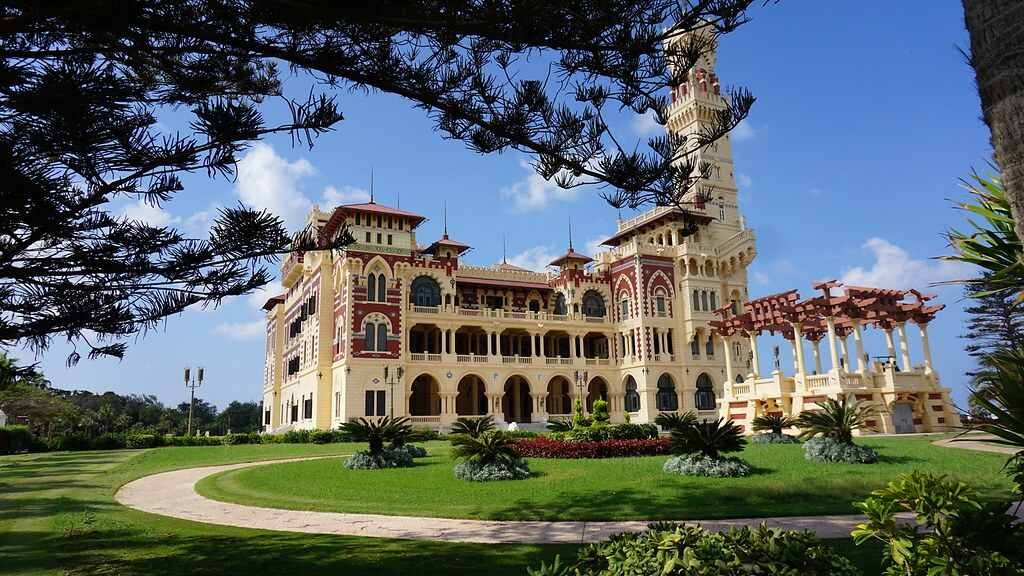Alexandria, Egypt’s second-largest city, is a blend of ancient history, rich culture, and breathtaking Mediterranean views. Founded by Alexander the Great in 331 BC, it has become a key destination for travelers seeking to explore Egypt’s vast historical heritage and modern allure. Alexandria’s blend of ancient wonders, modern-day elegance, and scenic views of the Mediterranean Sea makes it a unique travel destination.
From the historical sites that date back thousands of years to the relaxed atmosphere of its coastal beaches, Alexandria offers a diverse range of experiences. Alexandria has something to offer whether you’re a history enthusiast, a beach lover, or enjoy modern city attractions. Let’s dive deeper into Alexandria’s top things to see and do.
The Bibliotheca Alexandrina
Overview:
The Bibliotheca Alexandrina is an extraordinary modern interpretation of the ancient Library of Alexandria, one of the ancient world’s largest and most significant libraries. The new library, designed by the Norwegian architectural firm Snøhetta, opened in 2002 and has quickly become a cultural landmark in Alexandria.
Must-See Highlights:
- Main Reading Room: The library’s main reading hall is an architectural wonder. Its slanted, cylindrical shape mimics the image of the sun rising above the horizon, symbolizing enlightenment and knowledge. The room houses over 2 million books and is open to the public, providing a serene and inviting space for reading and reflection.
- Museum of the History of Science: Located on the library’s grounds, this museum showcases ancient scientific instruments used by Egyptian, Greek, and Roman civilizations. The instruments on display reveal the advanced knowledge and technologies of ancient peoples.
- Planetarium: The planetarium at the Bibliotheca Alexandrina provides a space for educational programs and exhibitions related to astronomy and space sciences. It’s a perfect stop for those interested in the cosmos.
- Exhibitions and Galleries: The library often hosts rotating exhibitions, including local and international art and photography, making it a hub for cultural expression.
Travel Tips:
- While entrance to the library itself is relatively inexpensive, many special exhibitions and events might require an additional fee.
- The library’s café offers a fantastic spot to relax, enjoy refreshments, and look out over the Mediterranean Sea.
The Catacombs of Kom el Shoqafa
Overview:
The Catacombs of Kom el Shoqafa are among Alexandria’s most significant archaeological sites. Discovered by accident in 1900, these tombs date back to the 2nd century AD and are a unique mix of Egyptian, Greek, and Roman cultures. The catacombs offer an intimate glimpse into the religious practices of ancient Alexandria.
Must-See Highlights:
- The Necropolis: The catacombs feature a network of underground tombs and burial chambers. The walls are decorated with intricate carvings that depict Egyptian deities and Greco-Roman symbols, reflecting the cultural fusion in Alexandria.
- The Spiral Staircase: One of the most memorable features of the catacombs is the spiral staircase leading down into the burial chambers. It’s a unique architectural feature that takes visitors deep into the heart of the necropolis.
- The Hall of Caracalla: One of the more impressive chambers within the catacombs, this room is considered dedicated to the Roman Emperor Caracalla. The chamber is decorated with murals depicting mythological creatures and gods.
Travel Tips:
- The catacombs are underground so that the temperature can be cool year-round. Wear comfortable shoes, as the paths can be uneven and sometimes slippery.
- For an even richer experience, consider hiring a local guide to explain the fascinating details behind the tombs and artifacts.
The Citadel of Qaitbay

Overview:
The Citadel of Qaitbay is one of Alexandria’s most iconic landmarks. Built in the 15th century by Sultan Qaitbay, this fortress was constructed on the site of the famous Lighthouse of Alexandria, one of the Seven Wonders of the Ancient World. The citadel offers stunning views of the Mediterranean Sea and a glimpse into the city’s rich maritime history.
Must-See Highlights:
- The Fortress Walls: The citadel’s thick, imposing walls were designed to defend the city from naval attacks. Today, visitors can walk along these walls and enjoy panoramic sea views and Alexandria’s coastline.
- The Maritime Museum: Inside the citadel is the Maritime Museum, which offers insights into Alexandria’s naval history. The museum showcases ancient naval artifacts, including ship models, weapons, and tools used by sailors in ancient Egypt and Greece.
- Panoramic Views: The citadel offers one of the best viewpoints in Alexandria, with sweeping vistas of the Mediterranean Sea, the city’s skyline, and the coastline. The view at sunset is particularly breathtaking.
Travel Tips:
- The Citadel is one of Alexandria’s more popular tourist destinations, so it’s best to visit early in the morning or later in the afternoon to avoid large crowds.
- The entrance fee is reasonable; students or large groups may receive a discount.
The Roman Theater
Overview:
The Roman Theater in Alexandria is a remarkable and well-preserved example of Roman architecture. Built during the 2nd century AD, it could accommodate up to 800 spectators and was used for various performances, including theatrical plays and musical events.
Must-See Highlights:
- The Seating Area: The theater is divided into several seating levels, and the marble seats provide a glimpse into the sophisticated engineering used in Roman times. The best-preserved section of the theater is the lower seating area, where visitors can sit and imagine the performances that once took place.
- The Mosaic Floor: The theater floor is decorated with intricate mosaics depicting various scenes from Roman life. The designs give visitors insight into the artistry and craftsmanship of the period.
- Nearby Remains: Explore the surrounding area where the remains of ancient villas and the nearby museum offer additional context to the site’s history.
Travel Tips:
- The Roman Theater is not as crowded as some other attractions in Alexandria, making it a peaceful place to explore.
- It’s an excellent spot for history enthusiasts to learn about the cultural exchange between the ancient Greeks, Romans, and Egyptians.
Montazah Palace and Gardens

Overview:
Montazah Palace is one of Alexandria’s most famous landmarks. Built by Khedive Abbas II in the early 20th century, It is surrounded by lush gardens and is located on the Mediterranean coast. The palace was once a royal retreat.
Must-See Highlights:
- The Palace Grounds: The sprawling gardens surrounding Montazah Palace are perfect for a relaxing stroll. The grounds are home to exotic plants, flowers, and trees, creating a tranquil environment for visitors.
- The Beaches: Montazah is also home to some of the best beaches in Alexandria. The sandy shores and crystal-clear waters provide an ideal setting for sunbathing and swimming. The beach area is divided into public and private sections.
- The Palaces and Towers: The architecture of Montazah Palace, with its Turkish-style domes and vibrant colors, is a striking example of royal design. While the palace is not open to the public, the surrounding areas offer plenty to explore.
Travel Tips:
- Montazah is a great place to enjoy a picnic, so bring some local snacks and beverages.
- If you’re interested in photography, the early morning light offers the best opportunities for capturing the beauty of the palace and gardens.
Alexandria Corniche
Overview:
The Alexandria Corniche is a long coastal road that stretches along the Mediterranean Sea, and It offers beautiful views and plenty of opportunities to explore the city’s vibrant waterfront.
Must-See Highlights:
- Relax by the Sea: The Corniche is the perfect place to unwind, with plenty of benches and spots along the road to enjoy the sea breeze.
- Seafront Cafes and Restaurants: Along the Corniche, many cafes and restaurants offer fresh seafood and local delicacies. Dining with a view of the Mediterranean is one of the highlights of visiting Alexandria.
- Nearby Landmarks: Walking along the Corniche, you’ll pass several notable landmarks, including the Alexandria Library, the Citadel of Qaitbay, and Stanley Bridge, making perfect photo opportunities.
Travel Tips:
- The Corniche is a great place for an evening stroll, as it comes alive with both locals and tourists enjoying the cool sea breeze and the views.
- Be mindful of the traffic, as it can get busy, especially during peak hours.
The Mosque of Abu al-Abbas al-Mursi
Overview:
The Mosque of Abu al-Abbas al-Mursi is one of Alexandria’s most important religious sites. It is dedicated to the famous Sufi saint Abu al-Abbas al-Mursi and is located in the heart of the city. The mosque is a beautiful example of Islamic architecture.
Must-See Highlights:
- The Courtyard: The mosque courtyard is surrounded by stunning arches and fountains. It’s an ideal place to relax and take in the serene atmosphere.
- The Dome and Minarets: The mosque’s large dome and twin minarets are an architectural marvel, showcasing intricate Islamic designs and geometric patterns.
- The Shrine of Abu al-Abbas al-Mursi: The shrine inside the mosque is an important pilgrimage site for Sufi Muslims.
Travel Tips:
- Visitors are required to dress modestly when visiting the mosque. Women should ensure their heads are covered, and both men and women should wear appropriate clothing.
Conclusion
Alexandria effortlessly blends ancient history with modern charm. Its rich tapestry of culture, history, and architecture makes it a must-visit destination in Egypt. Whether exploring the catacombs of Kom el Shoqafa, strolling along the Corniche, or relaxing on the beaches of Montazah, Alexandria offers an unforgettable travel experience.
Alexandria will leave a lasting impression on anyone interested in history, architecture, or the Mediterranean lifestyle. So pack your bags and prepare for an unforgettable adventure in one of Earth’s most historically rich cities.
FAQs about Alexandria
What is the best time to visit Alexandria?
The best time to visit Alexandria is spring (March to May) and fall (September to November). The weather is pleasant, with mild temperatures perfect for sightseeing. Summer (June to August) can be hot, especially with Alexandria’s coastal humidity, but it’s also a high season for tourists, offering a lively atmosphere. Winter is cooler, but Alexandria rarely experiences extreme cold.
Is Alexandria safe for tourists?
Yes, Alexandria is generally safe for tourists. Like any other city, it’s always important to stay vigilant, especially in crowded areas or at night. Common travel safety precautions, such as keeping your belongings secure and avoiding isolated places after dark, are recommended.
How can I get around Alexandria?
Alexandria offers various transportation options for tourists, including taxis, buses, and the metro system. The city is walkable, especially along the Corniche and other main attractions. For a more local experience, you can also try the Alexandria tram or rent a bicycle. Uber and other ride-hailing services are also available in Alexandria.
What are some must-try foods in Alexandria?
Alexandria is famous for its Mediterranean cuisine, especially fresh seafood. Don’t miss trying dishes like “Sayadeya” (fish with rice), “Fattah” (a rice dish with meat and garlic vinegar), and “Mahshi” (vegetables stuffed with rice and herbs). Street food like “Koshari” and “Falafel” are also popular. Be sure to visit local cafés for freshly brewed Egyptian coffee and desserts like “Basbousa” and “Konafa.”
How far is Alexandria from Cairo?
Alexandria is approximately 220 kilometers (137 miles) northwest of Cairo. The drive takes about 2.5 to 3 hours, depending on traffic. You can also take a train from Cairo to Alexandria, offering a scenic and affordable travel option that typically takes 2 to 3 hours. Additionally, buses and private taxis are available for direct transfers.










